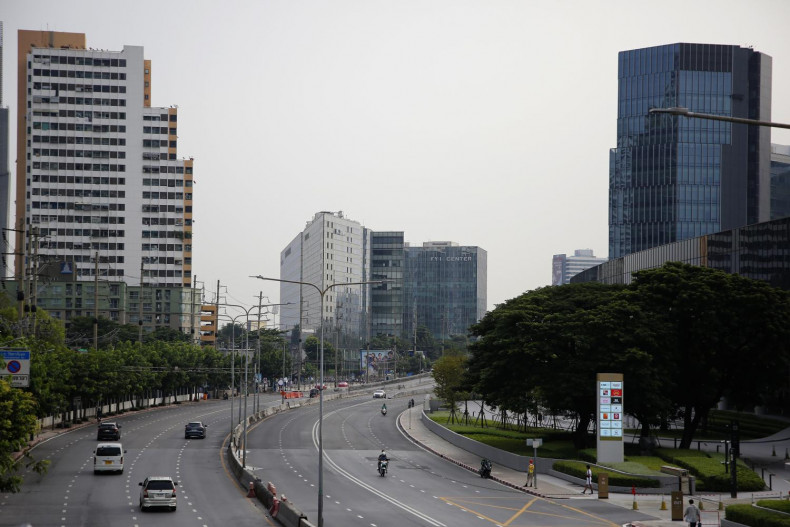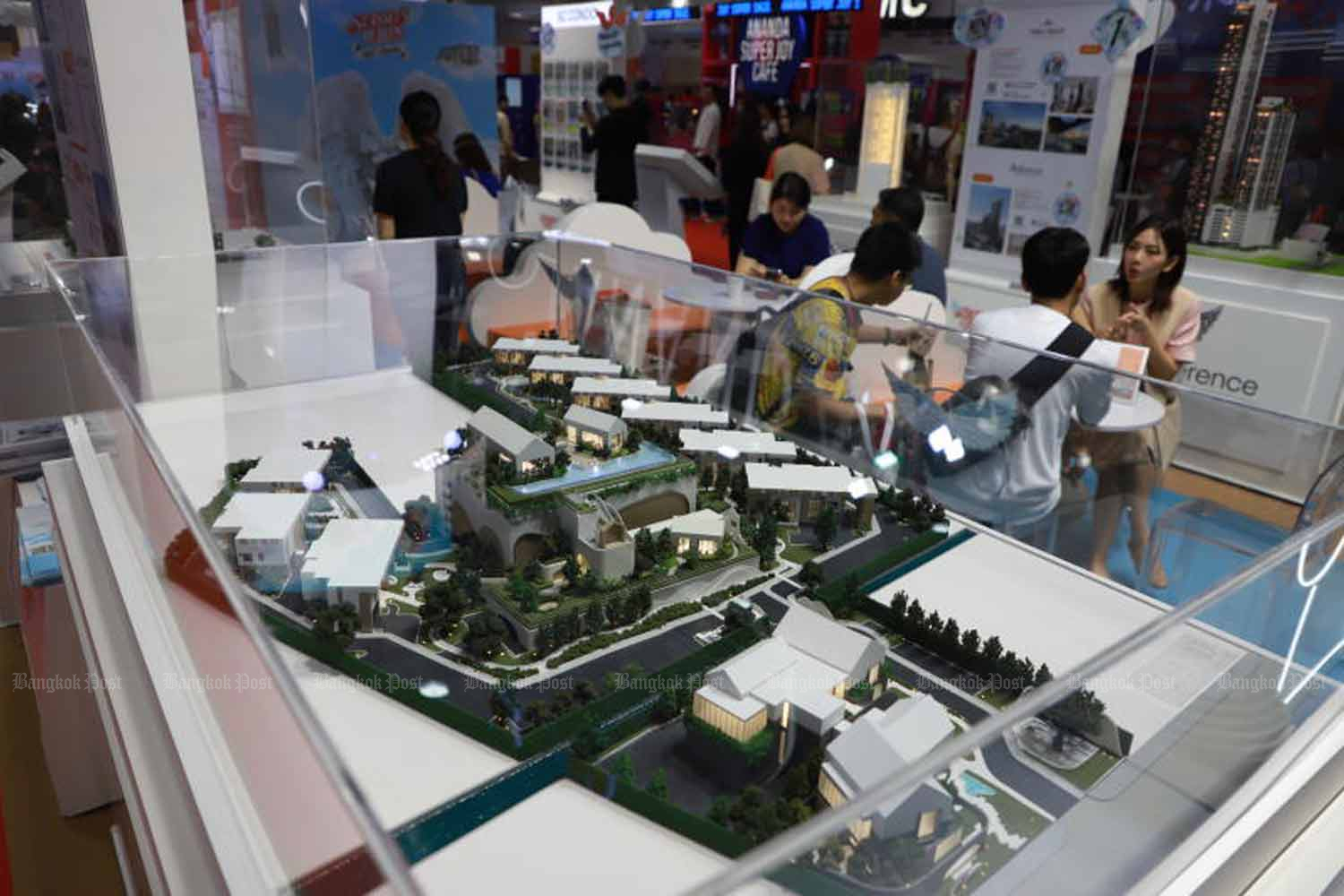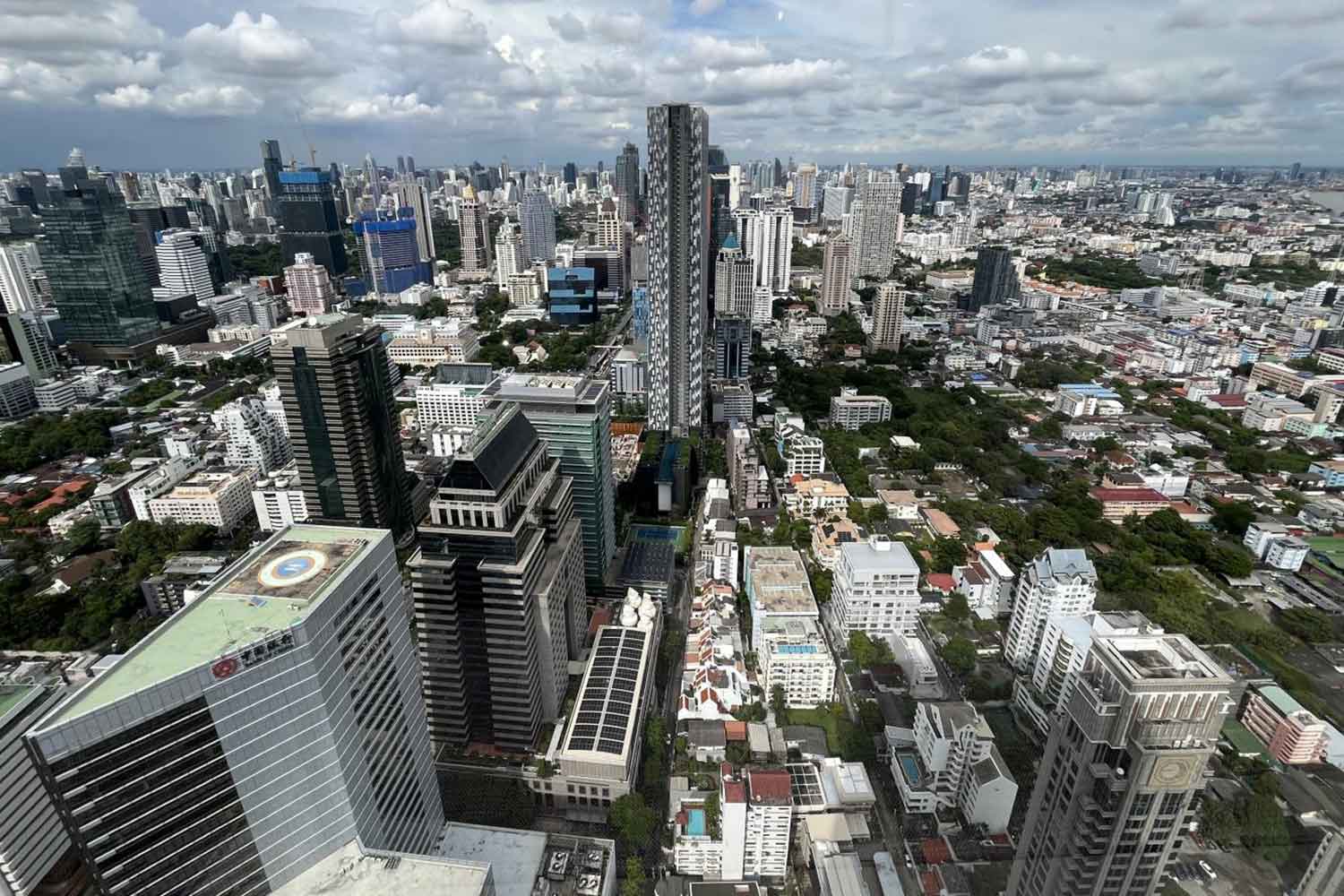The Bangkok office market is entering a prolonged adjustment, with Cushman & Wakefield forecasting that it will take a minimum of five years for supply and demand to rebalance. The current oversupply has triggered construction delays for several large developments and intensified price competition among newly launched projects. While some developers pause or defer new completions, others are racing to attract tenants through aggressive incentives as occupiers rethink footprints. The market’s trajectory will hinge on global economic conditions and the pace at which multinational tenants recalibrate their needs in Bangkok and across Southeast Asia.
Market Landscape: Oversupply, Vacancy, and the Demand Conundrum
The Bangkok office market has shifted from a period of rapid expansion to a phase marked by significant oversupply, which is reshaping both how developers plan new projects and how landlords negotiate with tenants. In late 2024, the city’s total office stock stood at about 8.78 million square meters, while the vacancy rate reached 27 percent—the highest level seen since the post-1997 financial crisis period. That crisis era sticker shock registered vacancy at roughly 36 percent, underscoring how exceptional the current oversupply is by historical standards. In contrast, the market enjoyed a notably tighter environment in 2021, when vacancy was in the 3–5 percent range, illustrating how quickly conditions can swing.
More than half of Bangkok’s office space—around 56 percent, equating to roughly 4.97 million square meters—was located in the central business district (CBD). The CBD concentration means that shifts in demand here ripple through the broader market, influencing pricing, leasing cycles, and investment sentiment citywide. Looking ahead, approximately 387,000 square meters of new supply were slated for completion between 2025 and 2027, a pipeline that could pressure rents and absorption if economic momentum remains tepid. The distribution of new space is not uniform, with the CBD absorbing a substantial portion of new construction while peripheral pockets await clearer demand signals.
The supply-demand imbalance is not just about raw space; it translates into rent dynamics and incentives. In the past two years, new projects entering the market have faced intensified price competition as landlords strive to secure tenants amid a cooling demand environment. Discounts of up to 30 percent have been observed on newly completed spaces during this period, a far cry from typical market norms. Landlords are not merely lowering rents; they are offering longer rent-free periods and more favorable lease terms to lock in tenants. For instance, some office landlords have begun providing six to seven months of free rent for three-year contracts, a level of incentive that would have been unusual in a more balanced market. In contrast, a healthier market years ago would typically feature discounts in the 10–15 percent range, underscoring how aggressive pricing has become as a strategic tool to attract tenants and retain existing ones.
On the demand side, occupiers are undergoing a restructuring that aligns with broader global corporate trends. Companies are downscaling, consolidating, and streamlining their real estate footprints, driven by efficiency drives and a reassessment of long-term occupational needs. This adjustment is not isolated to Bangkok; it mirrors a worldwide shift in how multinational corporations approach office space. Notably, several high-profile tenants have already reduced their Bangkok footprints, signaling a trend that could become more pronounced if macroeconomic conditions remain uncertain or if interest rate environments constrain corporate expansion.
The changing demand mix is evident in the stories of some major tenants. IBM has downsized its Bangkok space from 7,500 square meters to 3,500 square meters, reflecting a fundamental shift in workspace strategy. Microsoft has trimmed its occupancy from 2,000 square meters to 1,500 square meters, while Ericsson has reduced its space from 3,700 square meters to 2,000 square meters. Taken together, these moves demonstrate that even sophisticated, multinational tenants with long-standing Bangkok presences are recalibrating footprints to align with strategic priorities, operational efficiency, and evolving work models. The prevalence of such moves underscores a broader trend in which tenant demand becomes more selective, favoring flexible, high-quality spaces that can accommodate hybrid work arrangements and future resizing.
As a broader snapshot, the office market’s structural features—high vacancy, a sizable CBD share, and a significant incoming supply—skew incentives toward a renter-friendly environment. This dynamic increases the likelihood that landlords will deploy creative leasing structures, including staged rent escalations, longer free rent periods, and space optimization services to help tenants adapt to changing needs. The overall effect is to compress landlord yields in the near term while nudging developers toward higher-quality, more efficient product that can command premium rents when demand recovers. The current climate also heightens the importance of location quality, building amenity sets, and connectivity as differentiators in attracting and retaining tenants.
Key Projects: Delays, Indefinite Timelines, and Implications for Supply
Two very large developments highlight the current drift in project timelines and the rationale behind postponements. One Bangkok, a high-profile project along Rama IV and Wireless roads, plans to deliver 150,000 square meters of new lettable space via Signature Tower, which will also be a defining architectural landmark at 430 meters tall and poised to become the country’s tallest building once completed. The original schedule anticipated completion in 2028, but construction progress has stalled in the face of oversupply and the need for demand normalization before pushing ahead with full-scale buildout. The scale of One Bangkok means its timing is a bellwether for the market; its delay reflects a broader preference among developers to synchronize major allocations with a healthier balance of supply and demand.
Another high-profile project, The Parq’s Phase 2, contributes 50,000 square meters of space and spans the Rama IV and Ratchadaphisek roads corridor. Initially planned for completion between 2024 and 2025, Phase 2 has also faced indefinite delays. The rationale behind postponement for both One Bangkok and The Parq Phase 2 is straightforward: both developments were designed to add significantly to Bangkok’s supply, but the market currently requires developers to absorb existing stock and avoid overwhelming tenants with new space before demand returns to a more robust level. The operational logic is to avoid flooding the market when vacancy remains elevated and net absorption remains uncertain. By postponing, developers aim to preserve project viability, maintain project economics, and prevent potential downward pressure on rents and capital values through unsold inventory or rent-stressed leasing scenarios.
The indefinite delays of these two flagship projects reverberate through the wider development community. With such large-scale supply on hold or deferred, the anticipated pipeline between 2025 and 2027 could shift, potentially reducing the immediate pressure on vacancies and rents in the near term. However, the delay also introduces a degree of risk for developers who had banked on a steady pipeline of new space to support growth, as well as for investors who rely on project completion timelines to realize returns. The market’s response to these postponements will influence how developers price future opportunities, how much leverage they maintain on upcoming projects, and how aggressively they pursue alternative asset classes or mixed-use developments that can diversify risk.
In addition to the large-scale projects, the broader supply pipeline remains a variable in the market’s near-term dynamics. With major supply paused, demand absorption will become a more critical determinant of market health. The timing and pace of demand revival will dictate not only whether the large-scale projects resume construction in a timely manner but also whether other developers accelerate or slow down their planned launches. The interdependence between supply decisions and demand trajectories means that a shift in macroeconomic conditions, investor sentiment, or corporate real estate strategies could trigger a cascade of timing recalibrations across multiple developments.
Pricing, Incentives, and Leasing Strategies in a Softening Market
The current oversupply environment has driven a material shift in leasing strategies and incentive economics. Landlords increasingly compete on price and concession packages to secure tenants in a market that shows limited appetite for new commitments at higher rent levels. The observed discounts of up to 30 percent for new projects completed in the past two years reflect a sustainable, market-driven adjustment to align rents with the current capacity of demand. This represents a meaningful step away from the margins seen in tighter markets, where landlords historically relied on premium positioning and limited incentives to maintain rent trajectories.
The heightened level of rent-free periods—such as six to seven months of free rent for three-year leases—adds a substantial financing-like incentive to tenants. In a healthier market, these concessions would be comparatively modest; the depth and duration of the incentives signal both the urgency of occupancy objectives and the willingness of landlords to deploy generous terms to secure longer commitments. Such incentives also foster loyalty and tenant satisfaction, which can be essential in a market where the cost of relocation and disruption is non-trivial for tenants with complex operations.
This discounting and incentive environment influences both tenants and developers. Tenants benefit from improved initial occupancy costs and longer-term price protection, while developers must weigh the economics of offering deeper concessions against projected absorption rates and capital costs. The result is a more nuanced leasing landscape in which value creation is increasingly anchored in space efficiency, intelligent design, and amenity-rich buildings capable of supporting hybrid work models. For occupiers, the environment supports a flexible approach to space—favoring configurations that can accommodate a mix of in-office, hybrid, and remote work while preserving operational continuity.
Tenant Behavior: Downsizing, Restructuring, and Global Trends
A notable feature of Bangkok’s current market is the explicit trend toward downsizing among occupiers. Many companies are actively consolidating headcount, rethinking office footprints, and centralizing activities to improve efficiency and cost-effectiveness. This trend aligns with broader global patterns, where firms are reevaluating how, where, and how much space they truly need in an era of hybrid work and digital collaboration tools. The Bangkok market’s experience mirrors those fundamental shifts, reinforcing the idea that office space demand is no longer tied purely to headcount growth but to evolving ways of working and organizational design.
The downsizing trend is evident among several high-profile multinational corporations. IBM, Microsoft, and Ericsson have publicly reduced their Bangkok footprints, signaling a shift in how these global players allocate space within regional markets. IBM’s reduction from 7,500 to 3,500 square meters, Microsoft’s decrease from 2,000 to 1,500 square meters, and Ericsson’s cut from 3,700 to 2,000 square meters illustrate the practicality of shrinking to fit revised strategic needs. The drivers behind these moves include cost optimization, more flexible work arrangements, and the desire to concentrate activities in more adaptable or modern facilities.
Beyond company-specific decisions, the tenant mix in Bangkok is heavily influenced by global economic conditions and the preferences of international occupants. A significant share of demand originates from Japanese and American companies, whose investment patterns and corporate strategies exert a strong influence on leasing cycles and space requirements. The reliance on these national groups means that Bangkok’s office market is not immune to shifts in global growth trajectories, exchange rates, and international capital flows. If Japanese and American firms maintain a cautious stance or pursue selective expansion, Bangkok could experience a slower absorption pace and a more protracted period before vacancy rates normalize.
The consequence for landlords and developers is the need to align product offerings with the nuanced needs of these sophisticated tenants. This means prioritizing high-quality, well-located buildings that deliver strong connectivity, robust amenities, and flexible configurations. It also means embracing shorter-term lease options, scalable space solutions, and customer-centric services that can support hybrid and flexible work arrangements. For occupiers, the current climate provides an opportunity to scrutinize not only rent costs but also the quality and adaptability of space, the potential for expansion in the future, and the long-term total cost of occupancy.
Geographic Distribution and Future Supply Outlook: CBD versus Outer Areas
A geographic lens reveals that a substantial portion of Bangkok’s office stock sits in the central business district, but the market’s challenges are not confined to a single submarket. The CBD remains a focal point for demand, yet it also accounts for a sizable portion of the space under development and planned completions. The market’s central submarkets continue to attract premium tenants seeking premium infrastructure, but the oversupply pressure is felt across the board, including in the outer CBD and fringe areas.
Several outer CBD districts face more pronounced headwinds due to lower immediate demand, location dynamics, or accessibility issues. Bang Na, for instance, has experienced relatively subdued demand compared to more established CBD locations. Ramkhamhaeng faces a different but equally important challenge arising from the Orange Line transit project delays, which complicate future accessibility and attractiveness of space in that area. Phaya Thai-Vibhavadi, while still a viable location, is perceived as less attractive by some tenants, given its distance from traditional corporate corridors and the shifting preferences toward closer proximity to major transport hubs and employee-centric developments.
The supply pipeline through 2025–2027 is a critical determinant of market dynamics. With approximately 387,000 square meters of new space expected to enter the market across this period, the question becomes how absorption will evolve in tandem with macroeconomic developments. If demand remains tepid due to global economic conditions or corporate caution, the newly arriving supply could weigh on occupancy rates for longer than expected, potentially elevating vacancy hotspots in certain submarkets and prompting more aggressive leasing strategies. On the other hand, if the global economy improves and Thai macro indicators support growth, absorption could accelerate, allowing for a more rapid normalization of vacancy and rental levels.
By 2030, the market is forecast to reach a more balanced state, with vacancy expected to fall to the range of 15–20 percent. However, this optimistic scenario remains contingent on favorable global economic conditions that influence office tenants, particularly the large cohort of Japanese and American firms that constitute a meaningful portion of Bangkok’s demand. Achieving this balance would require a combination of steady economic growth, improved investor sentiment, and continued enhancements in Bangkok’s urban infrastructure, connectivity, and overall business climate. The forecast hinges on external macro forces as much as on local market fundamentals, underscoring the interconnected nature of Bangkok’s office market with regional and global economic trajectories.
Implications for Developers, Investors, and Occupiers
Developers face a strategic crossroads as they navigate an oversupplied market with a long runway to balance. The postponement of major projects signals a cautious approach to development economics, as investors and lenders seek greater certainty about demand trajectories before committing capital to large-scale, capital-intensive ventures. The decision to delay One Bangkok and The Parq Phase 2 reflects both prudent risk management and a market signal: space must be absorbed at viable price points before expanding supply further. This approach protects the value of existing assets and preserves the credibility of future development pipelines, while also allowing developers to reassess site-specific economics, financing structures, and partnership arrangements in light of evolving demand patterns.
For investors, the market’s current dynamics present opportunities alongside risks. The robust level of incentives and the discounting trend enhances the potential for yield compression in the near term but also requires careful underwriting of absorption rates and lease commitments. Real estate investors may find attractively priced assets in certain submarkets that offer flexibility, modern amenities, and strong connectivity, enabling them to capitalize on a market that could recover as global conditions improve. However, the risk profile remains sensitive to macroeconomic developments, currency fluctuations, and policy shifts that influence corporate real estate decisions and investment appetite.
Occupiers—especially multinational corporations with established Bangkok footprints—must carefully evaluate their real estate strategies in light of the current environment. The downsizing trend indicates a move toward more efficient space usage, better work flexibility, and more strategic geographic placement to align with corporate objectives. Occupiers may increasingly prioritize high-quality, adaptable office environments that support hybrid work, collaboration, and talent retention. They may also seek lease terms that balance cost efficiency with operational resilience, including options for scale-up or scale-down as business needs evolve. The interplay between landlord incentives and tenant demands will shape the region’s leasing outcomes for the foreseeable future.
Global Context: External Factors Shaping Bangkok’s Real Estate Cycle
Bangkok’s office market does not exist in isolation; its trajectory is deeply connected to global economic conditions, currency movements, and regional trade dynamics. The health of office demand in Bangkok is closely tied to the broader performance of international markets, especially among Japanese and American firms with operations in Southeast Asia. If global growth slows, or if corporate balance sheets tighten, Bangkok could experience a more protracted absorption period, delaying the normalization of vacancy and rent levels. Conversely, if global demand for Southeast Asia remains resilient and Thai economic fundamentals strengthen, Bangkok could witness renewed appetite for premium space, faster occupancy improvements, and a quicker revisiting of price points that reflect improved supply-demand balance.
In addition to macroeconomic factors, Bangkok’s urban infrastructure trajectory matters. The pace and reliability of transportation projects, such as mass transit expansions, can materially affect tenant preferences by enhancing access to submarkets and boosting the desirability of specific buildings or districts. If transportation improvements proceed on schedule, they can unlock demand in outer CBD areas and potentially shift leasing dynamics toward submarkets that currently face headwinds. Conversely, delays in transit initiatives may reinforce current misalignments between supply and demand, prolonging vacancy and delaying absorption in affected submarkets.
The interplay between global economic cycles and Bangkok’s local market fundamentals will continue to shape investment timing, project feasibility, and leasing strategies. Developers and landlords will need to monitor international capital flows, currency trends, and the performance of key economic partners to calibrate their portfolios, pricing, and incentive structures. Tenants, meanwhile, will weigh not only rents but also the strategic value of a location’s connectivity, amenities, and long-term cost of occupancy in a rapidly evolving business landscape.
Conclusion
Bangkok’s office market is in a pronounced adjustment phase, characterized by a sizable oversupply, elevated vacancy, and a shift in both leasing economics and corporate real estate strategy. Large-scale developments, including One Bangkok and The Parq Phase 2, have faced indefinite delays as the market seeks a more favorable balance between supply and demand. Price competition among newly launched projects has intensified, with discounts of up to 30 percent and longer rent-free periods for multi-year leases becoming increasingly common as landlords compete for attractively priced occupancy amid cautious demand. Tenant behavior reflects a global trend toward downsizing and organizational restructuring, with notable reductions in space by multinational firms such as IBM, Microsoft, and Ericsson, and a clear tilt toward occupancy by Japanese and American tenants.
As of the end of 2024, Bangkok’s office stock stood at approximately 8.78 million square meters, with a vacancy rate of about 27 percent—indicating a market that remains heavily oversupplied relative to historical norms. The CBD remains the dominant submarket in terms of stock, housing around 56 percent of the city’s total space, but upcoming completions between 2025 and 2027—estimated at roughly 387,000 square meters—could intensify competition in the near term if demand does not accelerate in step with supply. The market’s central challenge is balancing the push of new supply with the pace of demand recovery, a dynamic that will be heavily influenced by global economic conditions and the strategic decisions of international tenants.
Looking ahead to 2030, projections suggest Bangkok could return to a more balanced market, with vacancy expected to stabilize in the range of 15–20 percent. This optimistic outlook presupposes supportive global conditions, renewed investor confidence, and continued improvements in Bangkok’s connectivity and business environment. The path to balance will depend on how global cycles unfold and how quickly international tenants—particularly Japanese and American firms—adjust their Bangkok footprints in response to evolving corporate strategies and macroeconomic realities. In the near term, developers, landlords, and occupiers should prepare for a market that remains sensitive to external shocks, yet also presents opportunities for strategic repositioning, value creation, and long-term growth as Bangkok solidifies its role as a regional business hub in an increasingly dynamic Southeast Asian economy.





